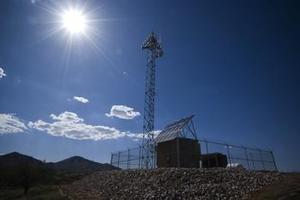Border securityGAO hammers CBP over border surveillance plan
A recently released Government Accountability Office (GAO) report blasted DHS’ latest attempt to build a virtual fence along the U.S.-Mexico border; the report concluded that Customs and Border Protection (CBP) lacked critical information needed to fully support and implement its Arizona Border Surveillance Technology Plan; without this information CBP could not guarantee that its cost estimates were reliable

DHS under fire for virtual fence failures // Source: sodahead.com
A recently released Government Accountability Office (GAO) report blasted DHS’ latest attempt to build a virtual fence along the U.S.-Mexico border.
The report concluded that Customs and Border Protection (CBP) lacked critical information needed to fully support and implement its Arizona Border Surveillance Technology Plan. In particular CBP did not complete a thorough enough analysis of technologies chosen by the program and officials have not clearly defined the benefits of the plan.
“Without documentation of the analysis, there is no way to verify the process CBP followed, identify how the underlying analyses were used, assess the validity of the decisions made, or justify the funding requested for the Plan,” the report found.
Given the lack of analysis or documentation, the report concluded that “it will be difficult for CBP to provide reasonable assurance that its cost estimate is reliable and that its budget request for fiscal year 2012 and beyond is realistic and sufficient.”
The new plan to build a virtual border fence was introduced earlier this year and comes as a replacement to the failed SBINet program. SBINet began in 2005 and was designed to cover the entire Arizona-Mexico border, but was canceled in January due to massive cost overruns. After spending more than $1 billion, only fifty-three of the 387 miles were completed.
The new border fence calls for the deployment of a mix of surveillance technology along the Arizona border including a network of integrated fixed towers (IFTs), mobile surveillance equipment, hand-held devices, and unmanned aerial vehicles.
To complete the new virtual fence, CBP has requested $1.5 billion over ten years with $750 million for acquisition and $800 million for operations and maintenance. The program has already received $185 million during the 2011 fiscal year and CBP has requested an additional $242 million.
From the start, the GAO expressed reservations about the cost and operational effectiveness of the new plan.
Testifying before the House Homeland Security Committee in March, GAO Director of Homeland Security and Justice Issues Richard M. Stana noted that questions remained about CBP’s decision-making processes and that “the basis for DHS’s technology deployment plan is not yet clear.”
The most recent report indicated the new plan is at risk of significant cost overruns and is plagued by a lack of transparency. According to the report, CBP’s plan “did not identify a level of confidence or quantify the impact of risks” and that “it will be difficult for CBP to provide reasonable assurance that its cost estimate is reliable and that its budget request for fiscal year 2012 and beyond is realistic and sufficient.”
The report specifically noted the absence of documentation regarding decisions on why certain types of surveillance technology were chosen and where they were deployed. Without such documentation, the GAO was unable to determine how the specific mix of technology was superior to less-costly options or why certain types were most appropriate for the terrain.
Furthermore with the number of apprehensions of illegal border crossers at its lowest point in forty years, the lack of documentation makes it difficult for officials to reassess their rationale for the plan or make changes.
To help ensure the success of the new virtual border fence, the report recommended CBP ensure that its underlying analysis for the program was up to DHS standards, determine the mission benefits of the fence and develop metrics to measure the program’s implementation, and conduct a post-implementation review.
